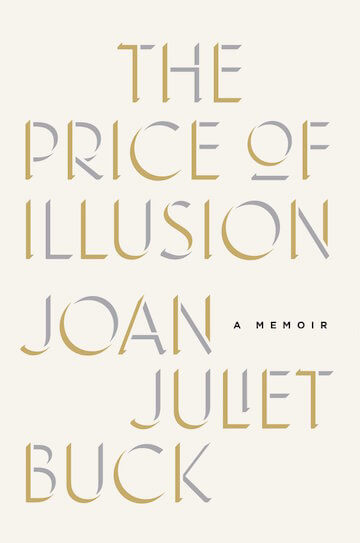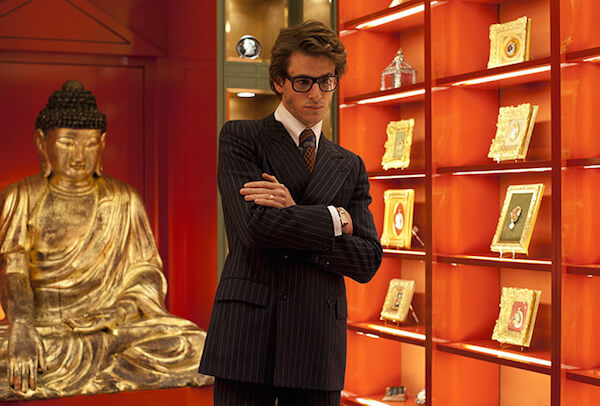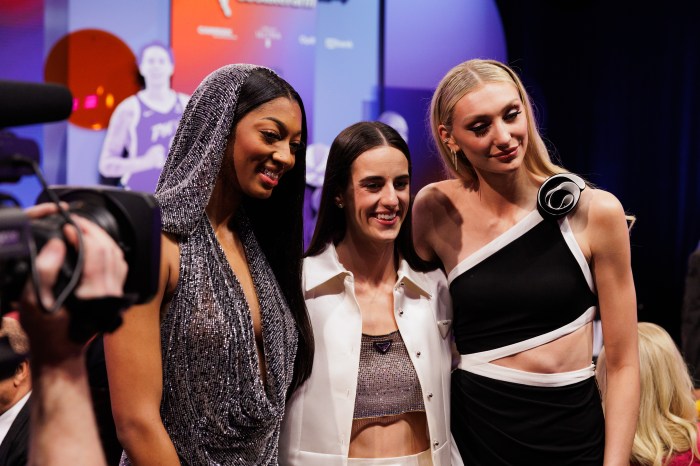Fashion designer Norman Hartnell, in his London office in 1944, is the clearest model for Paul Thomas Anderson’s Reynolds Woodcock, played by Daniel Day-Lewis, in “Phantom Thread.” | PUBLIC DOMAIN/ WIKIMEDIA COMMONS
Back in the day (1969 to be exact), in his book “The Season: A Candid Look at Broadway,” arch-homophobe William Goldman declared, “The three leading experts on heterosexual married life during the past 20 years have been Williams, Albee, and Inge, all three of them — at least to my knowledge — bachelors,” which was a problem Goldman claimed because, “In general, the homosexual on Broadway, especially the playwright, has to dissemble: he writes boy-girl relationships when he really means boy-boy relationships.”
That was a long time ago, in a pre-LGBTQ liberation land far far away. In 2017, with out and proud queer writers, directors, and actors and what Chritopher Isherwood called the “heterosexual dictatorship” in full retreat, Goldman’s “gay panic” is more ridiculous than ever. In fact, with Paul Thomas Anderson’s “Phantom Thread,” the situation appears to have been reversed. For this film, set in the fashion world of the 1950s, rather than dealing with the gay men who made it great it shoves them into a closet they never occupied.
When “Phantom Thread” was first announced many suspected that Anderson was making a biopic of Charles James, the British-born designer regarded as a mentor to Halston, Karl Lagerfeld, and other fashionistas of note. So much so that when you look for pictures of James on Google, you’ll find one of Anderson’s star, Daniel Day-Lewis, right next to him.
With Daniel Day-Lewis’ Reynolds Woodcock, Paul Thomas Anderson straightwashes ‘50s design world
This James-centric angle was brought up at the film’s preview screening in New York last month and immediately shot down by Anderson, who asserted his film’s anti-hero Reynolds Woodcock was drawn from the lives of Cristóbal Balenciaga, Hardy Amies, Norman Hartnell, Michael Sherard, Digby Morton, Edward Molyneux, Victor Stiebel, and John Cavanagh. The things is each and every one of these designers was gay. Reynolds Woodcock, while acting like a younger and ever-so-slightly less imperious version of Clifton Webb’s “Waldo Lydecker in “Laura” ( one of the greatest “coded gay” characters of the pre-Stonewall era), is seen (in long shot) taking the hand of the film’s heroine Alma (Vicky Krieps), a café waitress Woodcock makes his model and muse, and pulling her into his bedroom. What goes on inside that bedroom Anderson doesn’t show. And that’s because he has no idea what gay men think of straight women or how we interact with those whose beauty inspires us despite a complete lack of sexual desire.
Anderson, who has sired four children with his partner Maya Rudolph, doesn’t have the slightest clue about any of this, and therefore makes a character who is otherwise gayer than IKEA on Super Bowl Sunday, straight. The shot of Woodcock taking Alma’s hand is all he gives us to establish straightness — and it’s all he needs. The bulk of the action, unbeliveable as it sounds, revolves around her efforts to keep Woodcock for her very own by feeding him poison mushrooms and then (without any medical assistance) nursing him back to life. In other words a gay man on the edge of death is apparently, to her, him at his most desirable. In this, “Phantom Thread” is cousin to the “Twilight” series, in which a woman falling in love with a vampire stands in for a woman falling in love with an HIV-positive gay man.
A really good film could have been made about gay fashion designers and their straight female muses. The two (count ‘em) Yves Saint Laurent biopics released in 2014 go into this to some degree. Something more — say about Saint Laurent and Catherine Deneuve — would be fascinating. And that’s not to mention the long-promsed but never made biopic of Halston — one of whose muses was Anjelica Huston. Will “Phantom Thread” shut the final door on that? I suspect it might.
Daniel Day-Lewis as Reynolds Woodcock in Paul Thomas Anderson’s “Phantom Thread.” | LAURIE SPARHAM / FOCUS FEATURES
Reynolds Woodcock is modelled most directly after Norman Hartnell, a designer whose Wikipedia page reports, “never married, but enjoyed a discreet and quiet life at a time when homosexual relations between men were illegal. In many ways, the consummate Edwardian in attitudes and life-style, he considered himself a confirmed bachelor, and his close friends were almost never in the public eye, nor did he ever do anything to compromise his position and business as a leading designer to both ladies of the British Royal Family and his aristocratic or ‘society’ clients upon whom his success was founded.”
In “Phantom Thread,” Reynolds Woodcock describes himself as a “confirmed bachelor” which was the “polite” pre-Stonewall way of saying “I’m gay.” But we never see him interact with other men.
Wikipedia also reports, “Hardy Amies when speaking of Sir Norman Hartnell, another renowned dressmaker to the Queen, commented: ‘It’s quite simple. He was a silly old queen and I’m a clever old queen.’”
So why has Paul Thomas Anderson, a silly young heterosexual, created this exercise in straightwashing? That Daniel Day-Lewis, whose career was launched when he played a cheeky gay punk with a Pakistani boyfriend in “My Beautiful Laundrette,” has elected to end his career with this closet caper is more than a tad depressing. Here’s hoping Anderson’s poisoned mushroom of a movie won’t start a cinematic fashion trend of its own.
PHANTOM THREAD | Directed by Paul Thomas Anderson | Focus Features | Opens Dec. 24: Regal Union Square Stadium 14, 850 Broadway at 13th St.; regmovies.com | AMC Loews Lincoln Square 13, 1998 Broadway at W. 68th St.; amctheatres.com | Opens Jan. 11: Alamo Drafthouse Cinema — City Point, 445 Albee Sq. W. at Flatbush Ave., Brooklyn | drafthouse.com/nyc


































